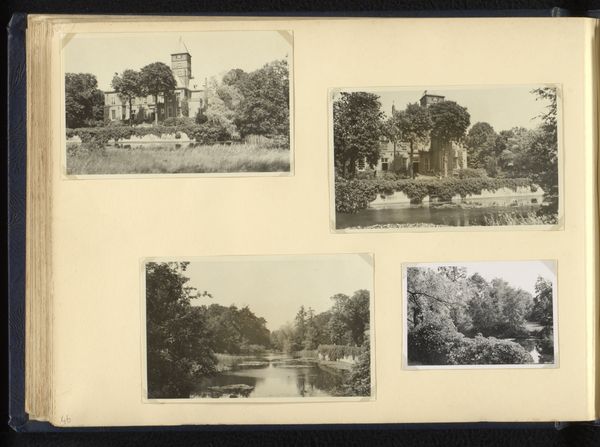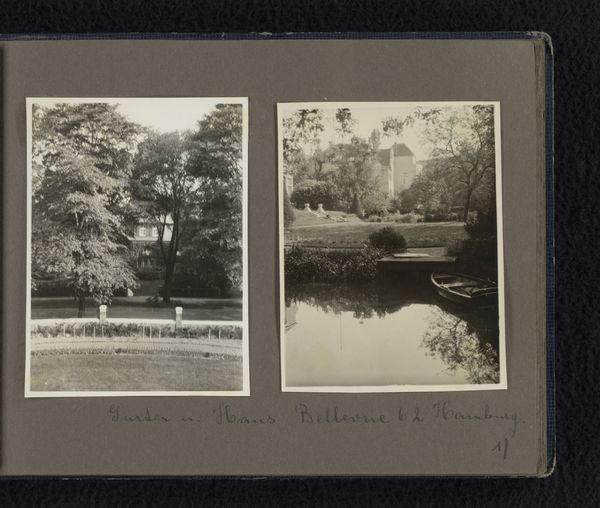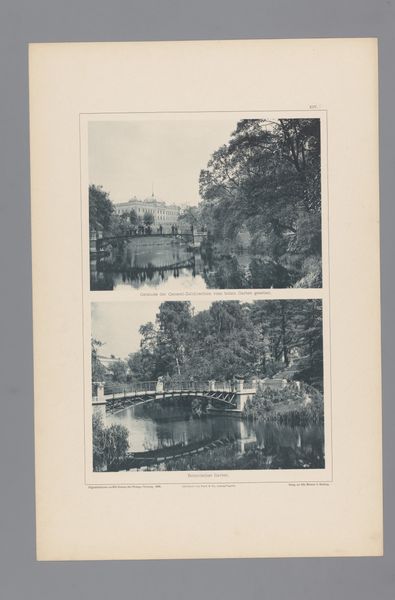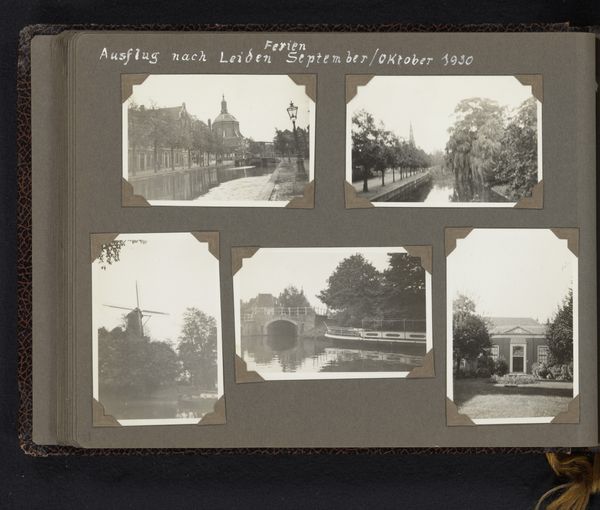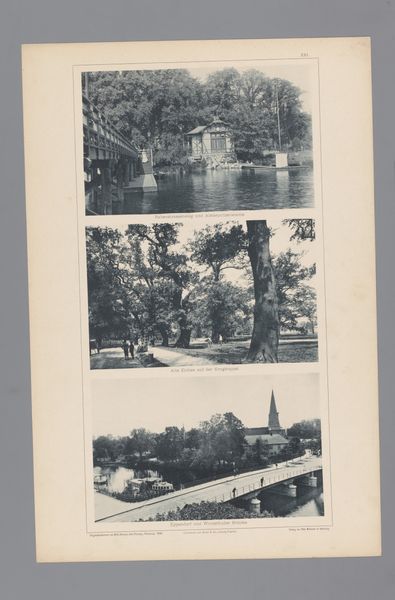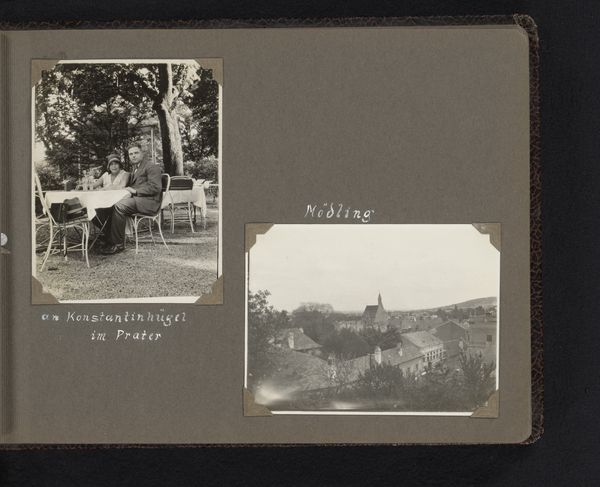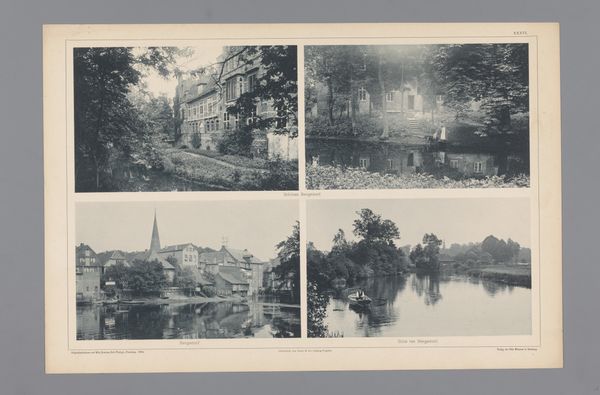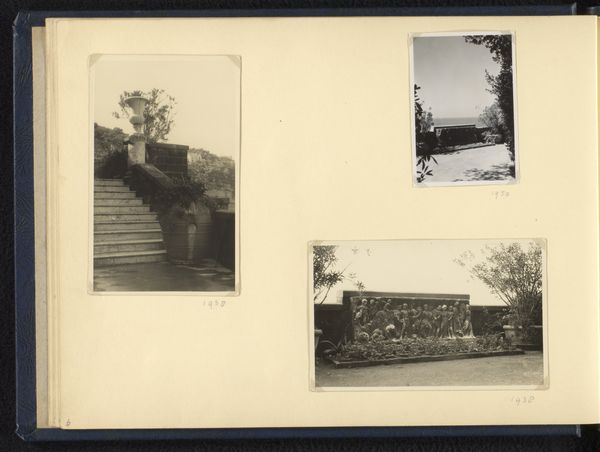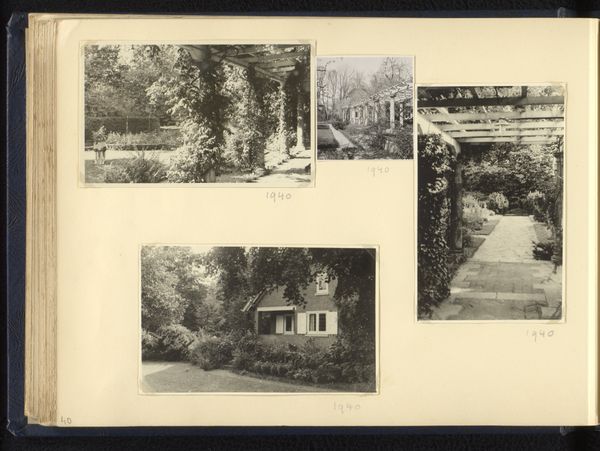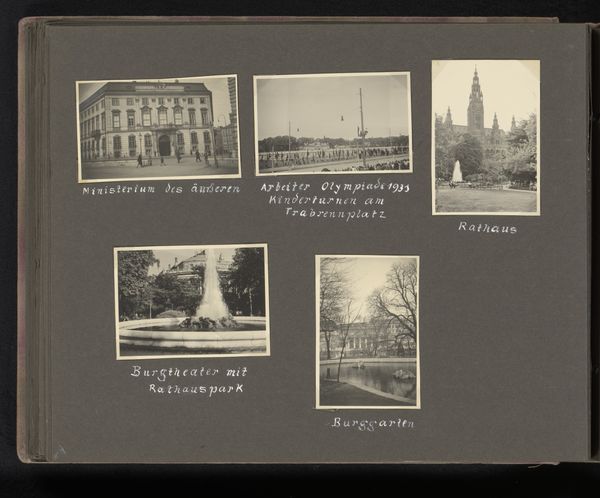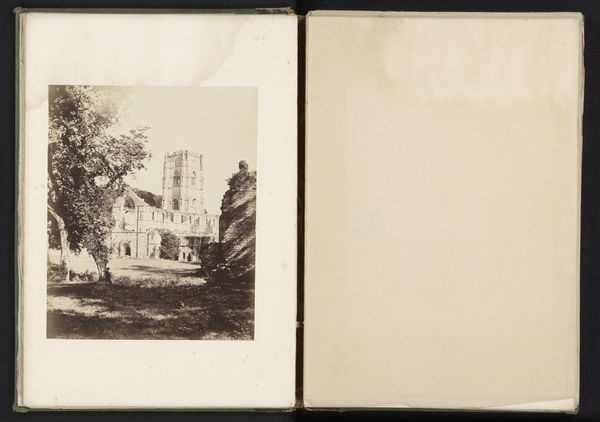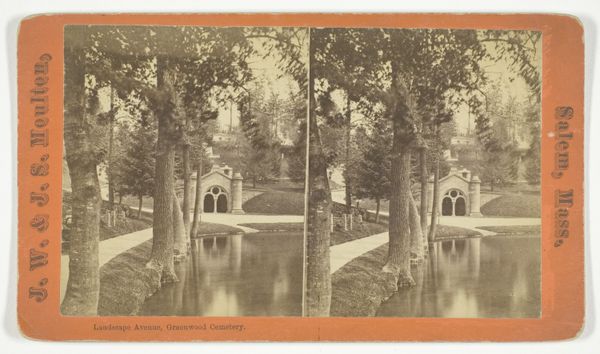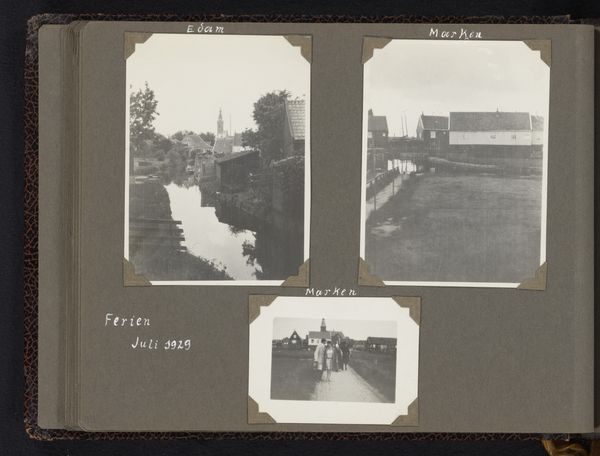
photography, gelatin-silver-print
#
landscape
#
photography
#
gelatin-silver-print
#
cityscape
#
modernism
#
realism
Dimensions: height 232 mm, width 336 mm
Copyright: Rijks Museum: Open Domain
Curator: This photo album page features three gelatin-silver prints by Norbert van den Berg, taken sometime between 1950 and 1956, collectively titled "Drie foto's van kasteel De Wittenburg in Wassenaar," which translates to "Three photos of De Wittenburg Castle in Wassenaar". Editor: My first impression is of a staged nostalgia. The sepia tones, the carefully composed landscapes with a looming central building, it evokes a yearning for a past, real or imagined, linked to ideas of legacy and privilege. Curator: I see your point. Given the post-war context, this portrayal takes on a specific resonance. Was this celebration of architecture intended to reaffirm pre-war social structures and hierarchies at a time of rebuilding and potential societal transformation? Wassenaar itself historically a municipality marked by its wealth and affluent inhabitants. Editor: Precisely! Look how the reflective water amplifies the grandeur. The landscape almost seems to perform its role, staging this aristocratic ideal. The choice of black and white also abstracts reality, offering an idealized visual register over straightforward documentation. Is this reinforcing a sense of timeless stability, perhaps, when the ground underneath everything had dramatically shifted? Curator: Undoubtedly. This is particularly interesting when juxtaposed against broader contemporary anxieties of postwar social and political shifts, of access and entitlement. These photos certainly were made, I'd argue, in a societal and historical context defined by the desire of the artist to give it a particular political reading and dimension. I cannot but think of them within a framework defined by social and cultural forces. Editor: I agree; they aren't simply picturesque scenes. By framing the castle in this way, the photographer participates in the narrative surrounding its importance. Analyzing the images beyond their aesthetic appeal prompts us to question what it represents and the ideologies subtly at play in shaping this visual portrayal of wealth and history. Curator: This really highlights the ways we engage with art—as not just isolated beautiful moments, but records of a specific vision embedded in cultural, sociopolitical layers, isn't it? Editor: Absolutely, even an apparently 'simple' photograph can become a site for active critique, bringing into sharp focus complex intersectional discourses surrounding identity, power, and place.
Comments
No comments
Be the first to comment and join the conversation on the ultimate creative platform.
